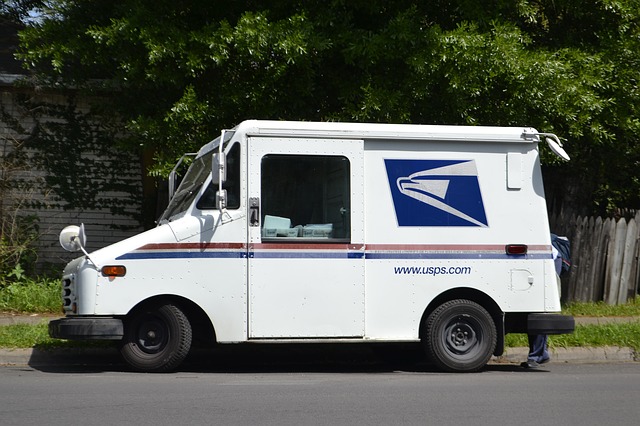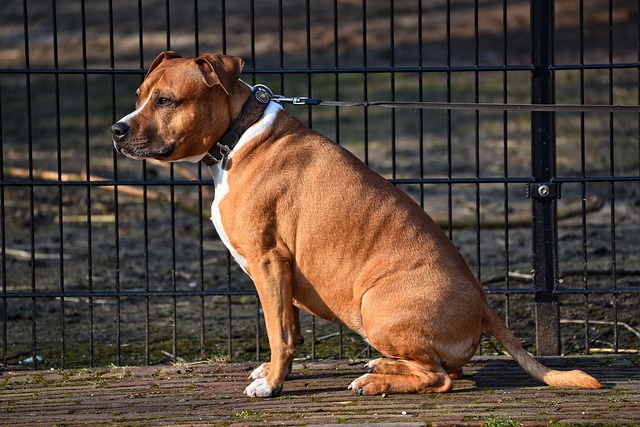
Dog versus mail carrier is a battle for the ages. It’s characterized by barks and snarls ending in ripped pants and even hospital visits. Cartoons joke about it and people laugh about it, but it’s a serious problem plaguing neighborhoods and postal workers. According to the United States Postal Service, there were over 6,200 dog attacks involving U.S. postal workers in 2017. That number is on its way down from 2016, but all of those attacks could have been prevented. The first step in protecting postal workers is understanding exactly why your dog hates the mail carrier. Here are a few explanations based on what we know about canine behavior.

It’s His Instinct To Be Territorial
The long-standing loathing between dog and delivery person started long before the postal service existed. Many behavior experts believe it dates back to when wild dogs lived in packs. They needed to protect their food and family from intruders, and a stranger approaching their territory was never a good thing. It was safest to assume the worst and attack all trespassers.
Your pampered pooch doesn’t have to deal with the hardships of being a wild dog, but the instinct to protect is still there. Biology is part of it, but humans have been breeding dogs for protection for generations. Specific breeds like Rottweilers and German Shepherds are valued for their natural protective instincts that can be reinforced through selective breeding. The problem is, instinct and lack of training can put people like your mail carrier and pizza delivery person in danger.
Fear of the Unknown
With all their barking and snarling, it’s easy to think an aggressive dog is an angry dog. Many aggressive dogs, however, act out of fear, not anger. It’s their fear of the unknown that forces them to choose between running away and defending themselves. When your dog hates the mail carrier and tries to attack them, you know they’ve chosen fight over flight.

To you, the mail carrier is an innocent part of every day life. But for your dog, mail carriers and other delivery people represent a confusing threat. When friends visit, you invite them inside, introduce them to your dog, and your dog ends up sitting in their lap and soaking up the extra head scratches. But when the mail carrier drops off a package, there’s a completely different routine. There is no formal introduction, no cute baby talk, and definitely no head scratches. Instead, your dog is left to wonder and worry about who this mystery person is and what they want. The more the mail carrier comes around, the more worried your dog gets.
A Progressive Problem
The first time your dog questioned the mail carrier’s behavior, they probably barked. Most dog owners don’t think twice about it. The issue is, your dog thinks he was the reason the “intruder” left. He doesn’t know it’s part of the mail carrier’s job to drop things off and then leave quickly. For all he knows, the stranger would have jumped the fence and murdered the family if it wasn’t for his quick thinking. In his mind, barking saved the day.
But what happens the next day when the stranger comes back? Your dog thinks, “Didn’t you get the message yesterday? You’re not welcome here!” The persistence of the mail carrier tells your dog he has to try harder. Instead of a simple warning bark, now he barks louder and longer. It works at first, but the intruder keeps coming back. To make things explicitly clear, he starts growling, snapping, lunging, and trying to bite. It’s a never-ending progression that gets increasingly more dangerous.
How To Help Your Dog Make Friends With the Mail Carrier
For the sake of your mail carrier’s health and your dog’s stress level, helping the two make friends should be a priority. How you do it and how long it takes to smooth things over will ultimately depend on how fiercely your dog despises delivery people and how long they’ve been doing their “stay off my lawn” routine. Here are a few tips to get you started.

Break the Cycle
If your dog is serious about their feud with the postal service, they know what time their mortal enemy arrives, what their vehicle sounds like, and where they need to be in the house to best send their threatening message. It’s part of their daily routine, and the first step in modifying the behavior is to break the cycle.
Before the mail carrier arrives, move your dog to an area where they can’t see or hear anything that’s happening near the mailbox. Let them stay blissfully unaware, and don’t let them out until after the carrier has left and you’ve collected your mail. This won’t solve your problem, but it’ll give your mail carrier much-deserved peace of mind, and the interruption in your dog’s routine will help break their bad habit. Do this for at least a week or until your dog seems calm and relaxed during mail time.
Desensitization Conditioning
To convince your dog the mail carrier is friend and not foe, start slowly by changing the negative association to a positive one. Move your dog to an area where they can hear, but not see, the mail being delivered. Reward calm behavior with treats and praise, and ignore aggressive or restless behavior. You might need to move farther away to really let your dog relax.
Stay at that distance for several days. As your pup learns to associate the mail carrier with treats and praise, you can gradually move closer. If you get to a point where he focuses on warning the mail carrier instead of receiving your reward, you moved too fast. Go back a few steps and continue reinforcing rewards for good behavior. Your goal is to get close to the mailbox while maintaining your dog’s focus.

Positive Associations
As you progress through conditioning training, you can start thinking about involving your mail carrier. Never ask your mail carrier to interact with your dog before the dog is ready. But if your dog can see, smell, and hear the carrier do their job without acting out, they might be ready for the next step.
Start by asking your mail carrier to toss a high-value treat to your dog from several feet away. Do this every day so your dog starts to associate the person with yummy treats. Once you, your dog, and most importantly, the mail carrier, feel confident, try having the carrier hand a treat directly to the dog. If all goes well, the mail carrier can hand the dog a treat, give some praise, and go about their day knowing with more practice, they won’t have to worry about your dog.
Your dog won’t change his feelings about the mail carrier overnight. It will take several weeks of building a positive association to convince him to stand down his guard. It’s important, however, to be consistent and not give up. No postal worker deserves to be afraid on the job, and your dog will feel better knowing there’s no threat to his family.
Sources: U.S. Postal Service, Dog Discoveries, The Mercury News
The post What’s The Real Reason Your Dog Hates The Mail Carrier? appeared first on iHeartDogs.com.
via Whisker Therapy